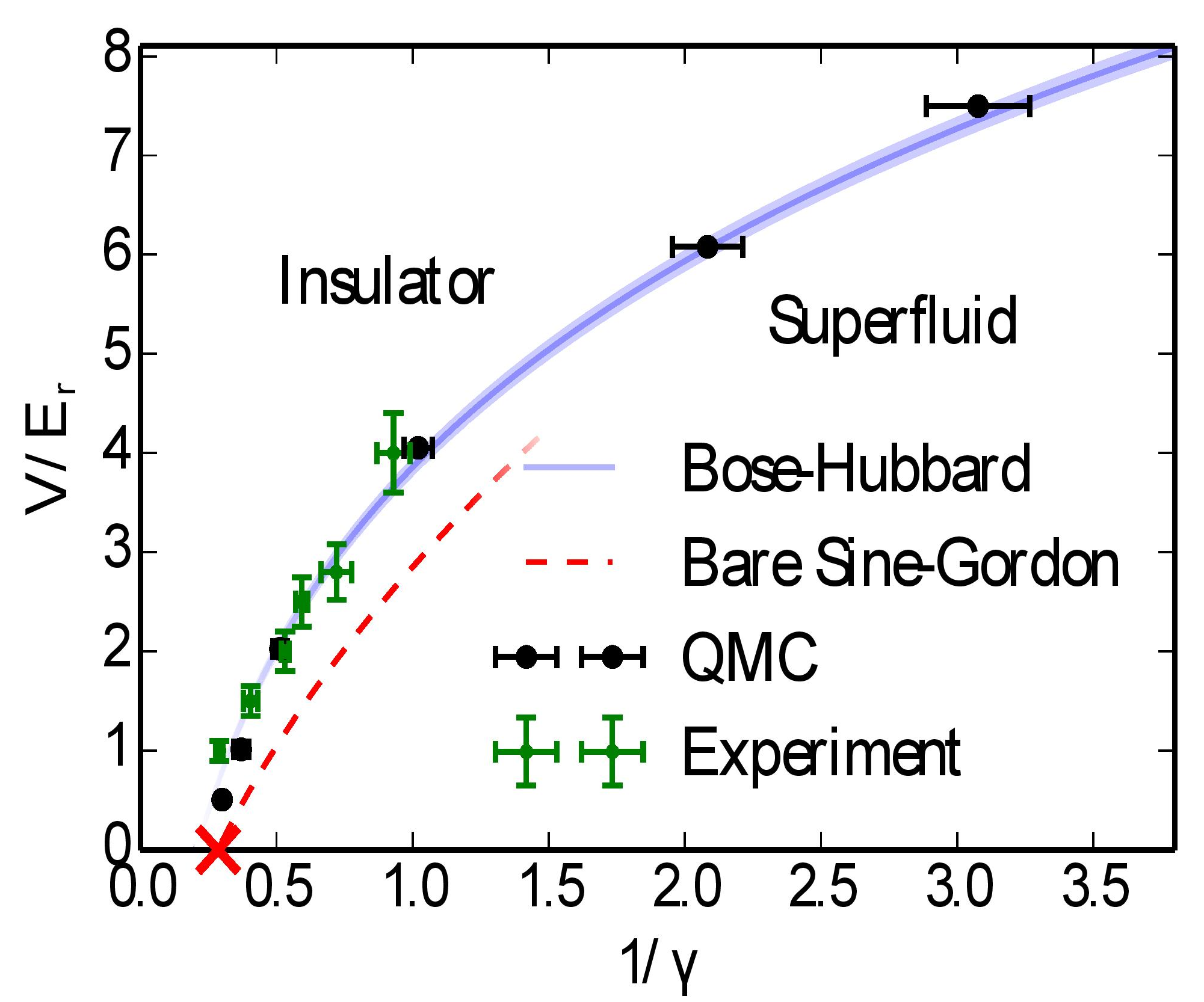 |
The Mott insulator is a well know quantum phase appearing in periodic potentials at integer particle fillings. In ordinary matter the potential strength cannot be changed, and it is therefore impossible to study the fate of the Mott insulator for vanishing potential strength. We have now employed an ultracold quantum gas to investigate the superfluid-insulator transition of one-dimensional bosons in shallow periodic potentials. Experimentally, we have performed transport measurements and we have analyzed them with a phase slip based model to accurately determine the Mott transition. We have compared the experimental results with a theoretical analysis based on quantum Monte Carlo simulations in continuum space and Luttinger liquid approach. Experiments and theory are in excellent agreement. Our study provides a quantitative determination of the critical parameters for the Mott transition and defines the regimes of validity of widely used approximate models, namely, the Bose-Hubbard and sine-Gordon models. G. Boéris et al. |


Quantum simulations with a tunable Bose-Einstein condensate… We use BECs made of potassium-39 atoms, with interaction tunable via Feshbach resonances, to explore open problems in condensed-matter and few-body physics. Recently we have been studying quantitatively Anderson localization of non-interacting matter waves in disordered potentials, the interplay of disorder and interactions in low-dimensional systems, and superfluidity in bosonic wires.
